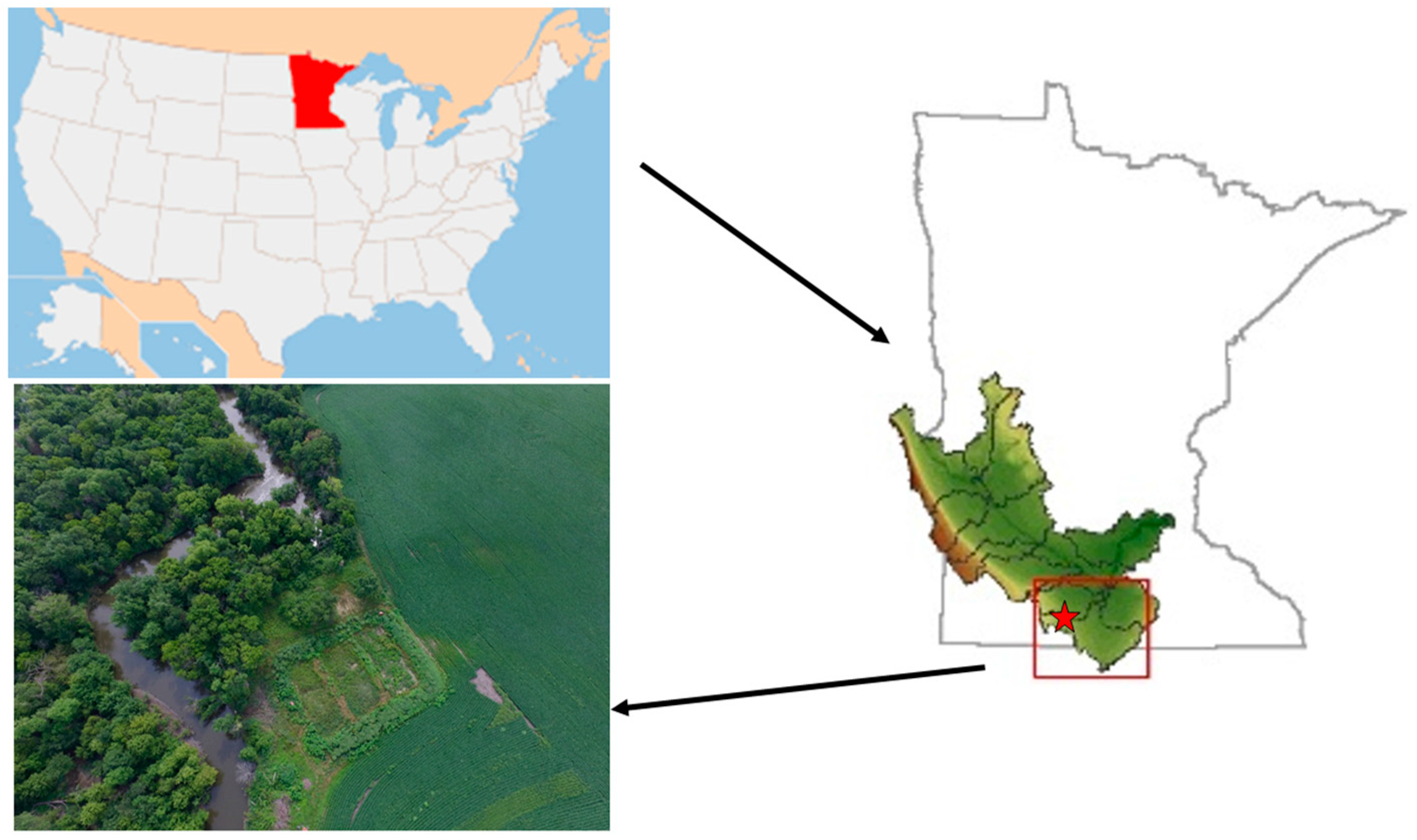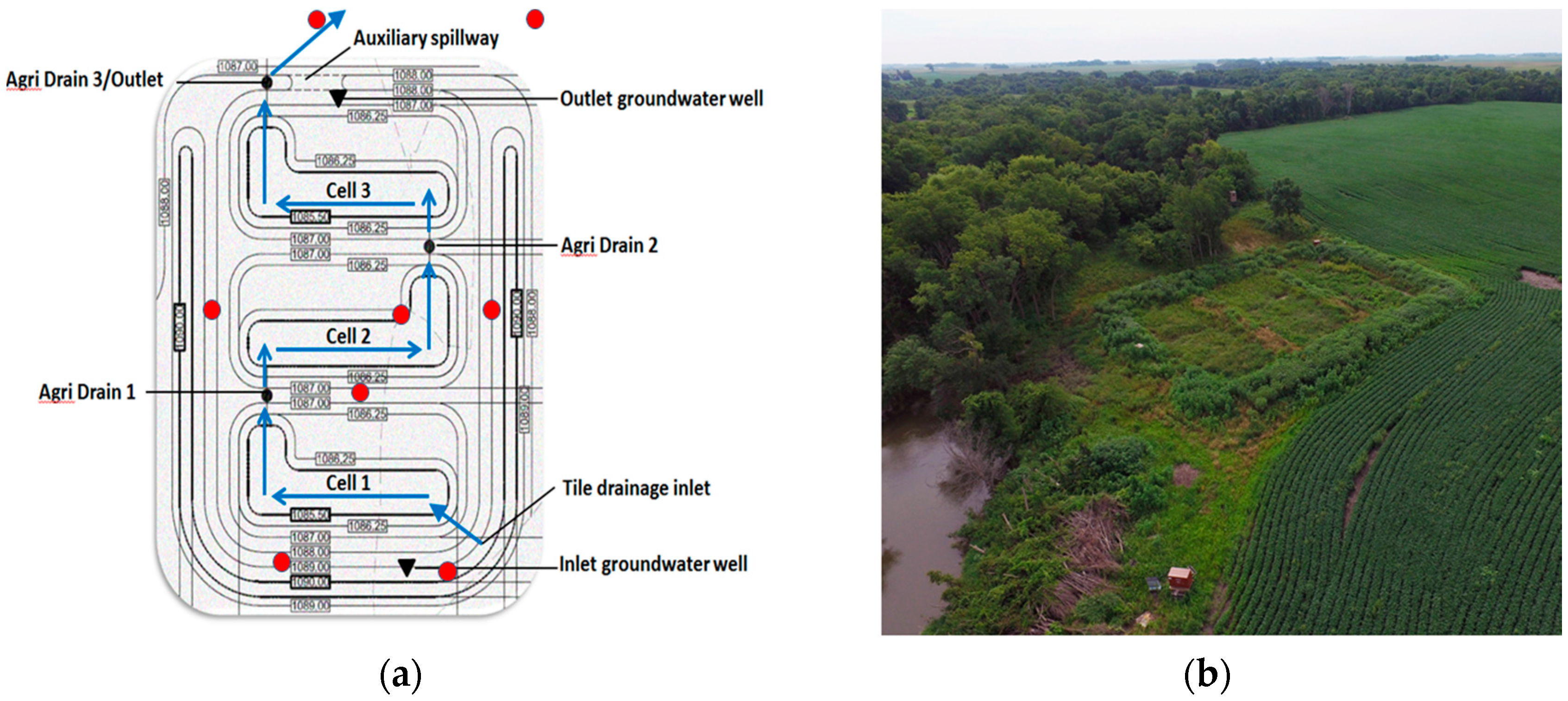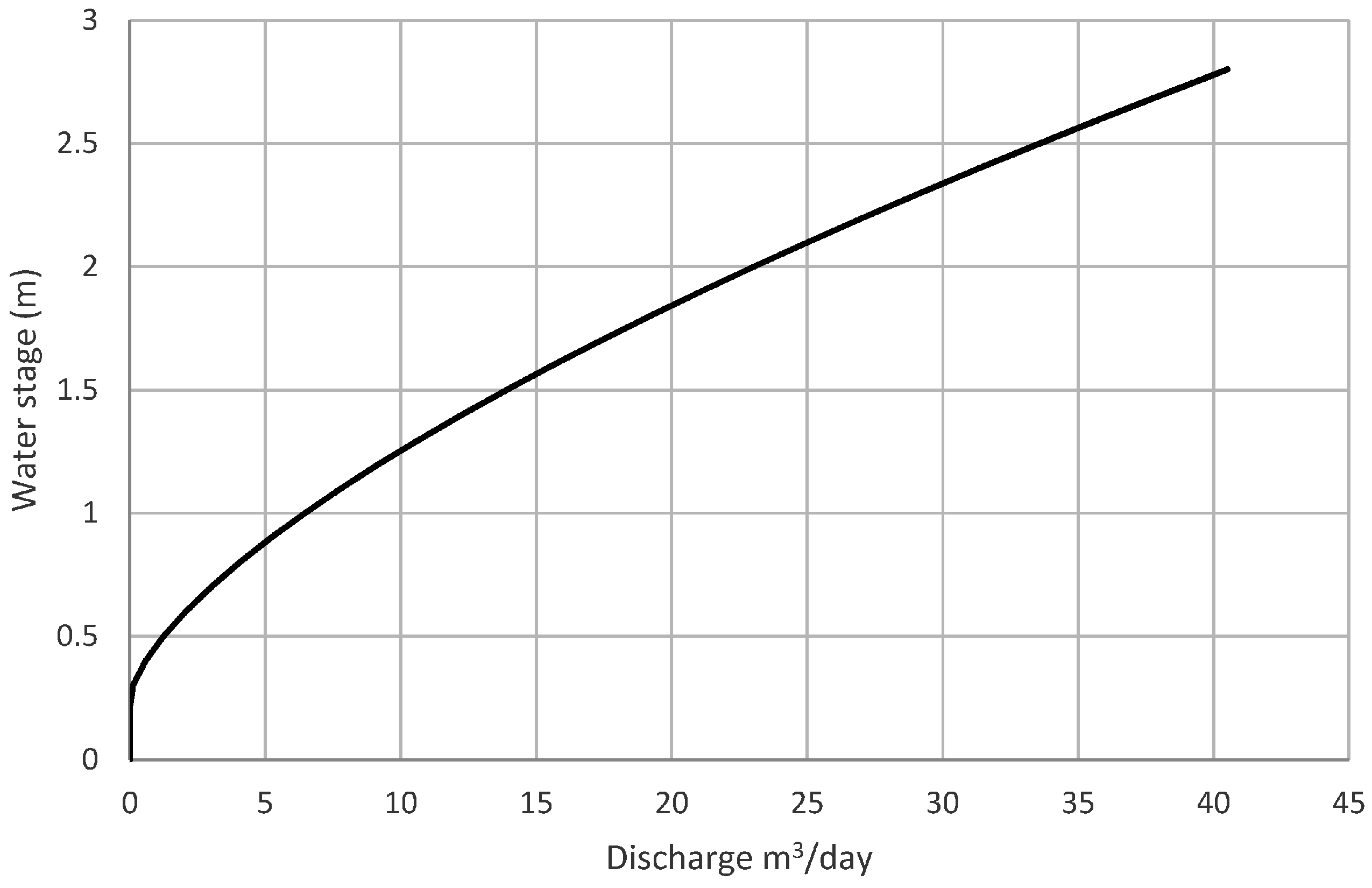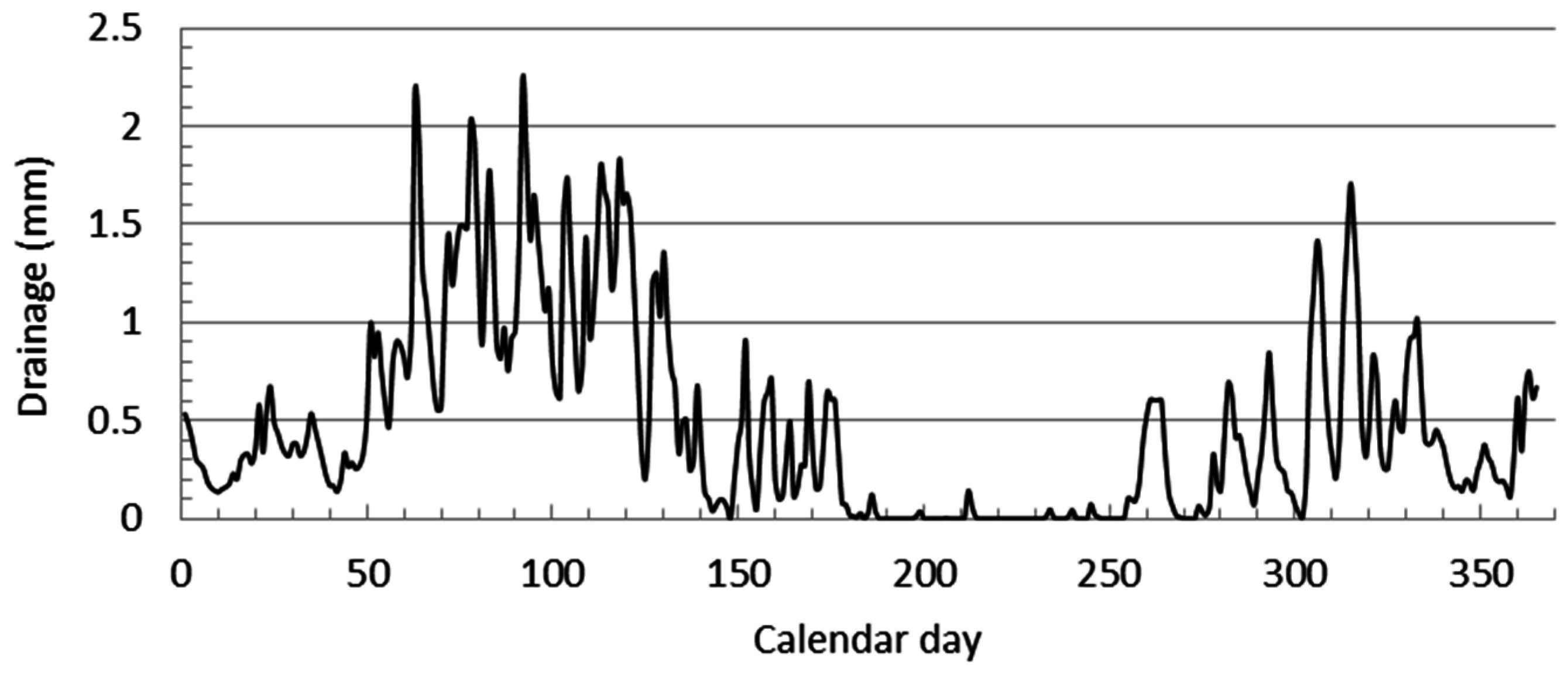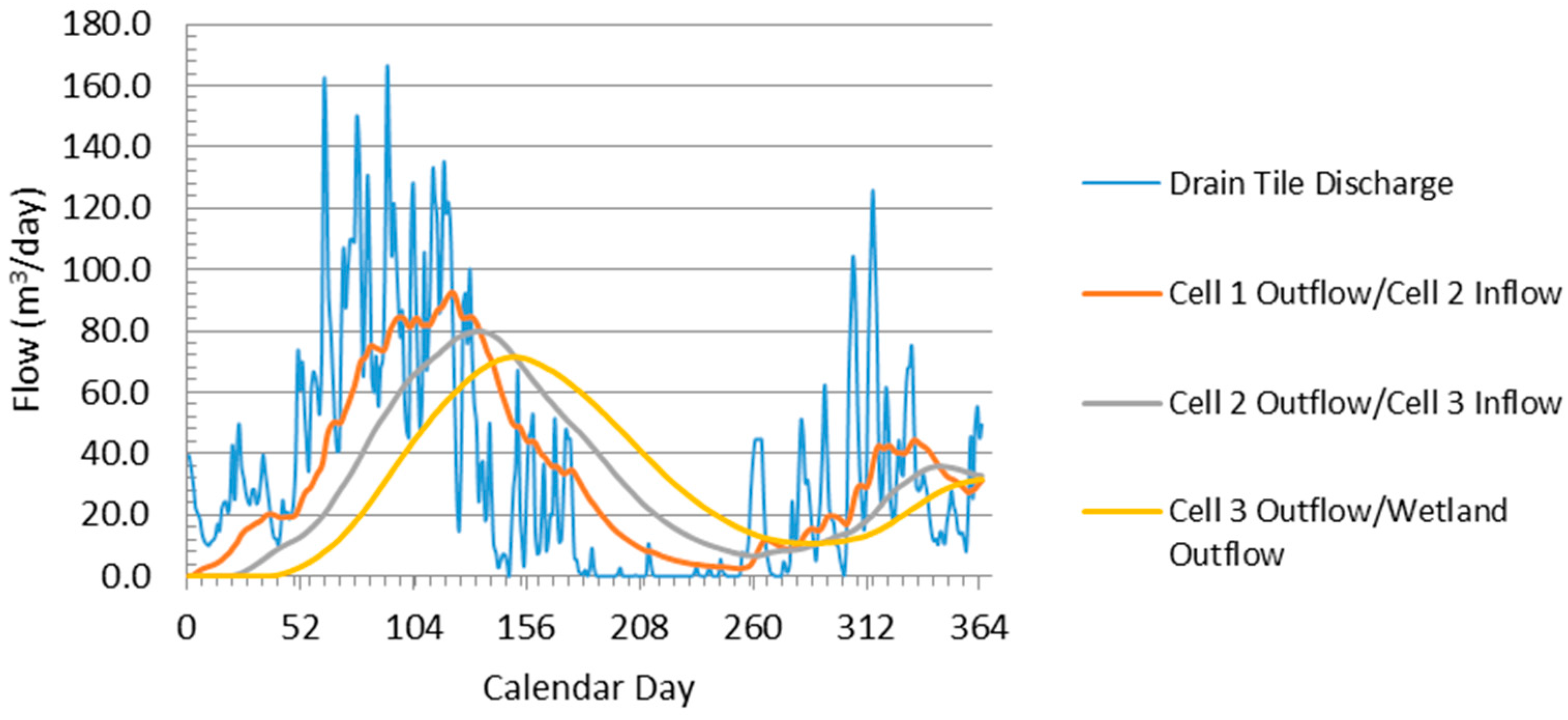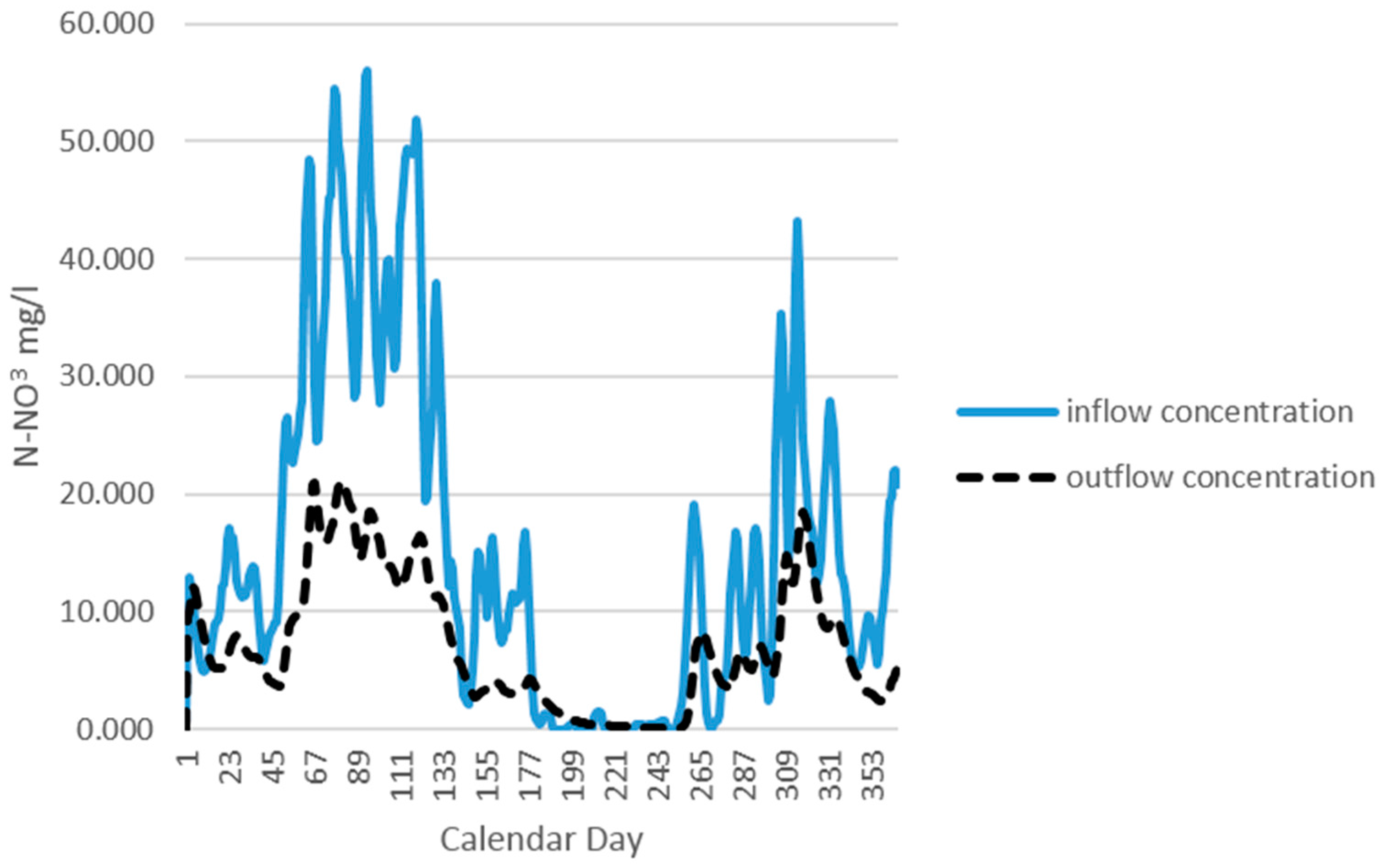1. Introduction
Although it is widely recognized that wetlands provide nutrient removal and water storage benefits to downstream waters [
1], many of the native wetlands in the Midwestern U.S. have been drained for agriculture and development, reducing those functions in the present-day landscape. Prior to the adoption of the Wetland Conservation Act in 1992, over half of the original wetlands in southern Minnesota were drained through the installation of agricultural tile lines and surface ditches. During this same time, Minnesota’s first Conservation Reserve Enhancement Program (CREP) initiated, with over 50% of the enrolled land area (>20,000 ha) dedicated to wetland restorations in southern Minnesota. As the program evolved, 10–15 year contracts were granted rather than permanent easements, which lead to increased landowner adoption. As these contracts began to expire between 2007 and 2010, much of the land area was not renewed due to increased commodity prices. Since 2007, Minnesota has sustained the largest loss of emergent wetland area in the Midwest [
2]. The reduced water holding and filtration capacity has resulted in water quality issues such that nitrate pollution in the Midwest has been implicated as a major contributor to the Gulf of Mexico hypoxia [
3,
4]. Recent flood events have also been connected to the reduced landscape water holding capacity resulting from the declining wetland area [
5,
6,
7].
To remediate these changes and specifically address water quality concerns, additional restored or created wetlands are needed in the Midwestern agricultural landscape. Past studies have shown Midwestern wetlands are effective at removing nitrates, however, phosphorus removal efficiency is variable depending on whether the load is attributed to the dissolved or particulate fraction [
8]. Past studies of water quality treatment wetlands indicate that large restored Midwestern wetlands are highly effective at peak flow reduction, water storage, and nitrate removal but to a lesser extent for phosphorus removal [
9,
10]. Nitrate-nitrogen (NO
3-N) export was reduced by 85% during the primary loading period of April to June. Particulate phosphorus and sediment from inflowing field and gully erosion were effectively settled out in the wetlands, however, soluble orthophosphorus (OP) export, (reaching a maximum concentrations of 1.3 mg/L) and wind suspension of organic matter from the wetlands, resulted in no significant removal of total phosphorus (TP) and total suspended solids. Although the wetlands were a net remover of TP, high levels of soluble OP were exported out of the wetland in mid- to late-summer reaching levels of 1.3 mg/L.
Although nitrate has been the focus of Midwestern water quality treatment wetlands, phosphorus is increasingly being considered as well. Research has indicated that TP and soluble OP as a measured load may be less than 2% of the applied phosphorus, however, when compared to the amount responsible for harmful algal blooms, the losses cannot go unaddressed. Long-term phosphorus removal depends upon plant uptake and physical settling [
11]. Designing a treatment wetland to enable plant harvesting is one example of how phosphorus could be permanently removed from the system to prevent re-mobilization. Native perennial species that are adapted to wet soil conditions, or along the fringe of wetlands, have the capacity to aid in removing excess phosphorus from wetlands and thus provide an opportunity for addressing phosphorus in drainage water and wetlands used to treat those waters.
While many wetlands have been restored for ecological reasons, there is a growing need to develop wetlands to specifically capture subsurface drainage flow [
12]. Subsurface drainage systems short-circuit riparian buffers or grass filters increasing NO
3-N loadings to surface waters and reduce the opportunity for denitrification to occur in the soil of the riparian buffer [
13,
14]. To address this nutrient loss, tile-drainage systems can be routed to discharge into a constructed treatment wetland for treatment prior to discharging into drainage ditches or streams. Similar to natural wetlands, constructed wetlands can provide many of the benefits of restored wetlands, including nutrient removal, flood storage, the decoupling of storm rainfall and surface runoff, and cycling of nutrients [
15]. Habitat for fish and wildlife, recreation and aesthetic benefits may be provided but often to a lesser extent than natural wetlands.
Given the increasing value of farmland in the Midwest, there is a pressing need for wetland systems that are compatible with current agricultural systems to improve landowner adoption. Innovative designs, strategies, and management must be explored in order to maximize the nutrient reduction efficiency of these treatment wetlands while minimizing the construction footprint on land that would need to be taken out of agricultural production. One way to accomplish this goal is by creating edge-of-field systems. These designs include fitting wetlands into riparian zones and land adjacent to drainage ditches to minimize the land area and associated costs of easements or land purchase. Crumpton et al. [
8] developed a treatment wetland design that is built in-line with public drainage ditches and was highly effective at removing nitrate. The disadvantages were high initial costs for land easements, the legal and social difficulties of modifying public ditch systems, and phosphorus removal was not considered. In 2012, a treatment wetland was proposed on private farmland in southern Minnesota to test some of the ideas discussed above.
Study Purpose
The project was developed to design, construct and test a small-scale, treatment wetland system compatible with tile-drained row crop agriculture in southern Minnesota, USA. The location was cited at the edge of an agricultural field, to minimize the land area removed from agricultural production, and to adequately receive tile water prior to creek outflow. This is referred to as “edge-of-field” treatment. The project was intended to serve as a research and demonstration site for the wetland and other innovative farm management practices on the site for landowners and government agency staff.
From a research perspective, the primary objectives were to measure the flow of water into and out of the wetland and determine the nitrogen and phosphorus removal efficiency in the treatment wetland. A secondary objective was to quantify phosphorus uptake by plants in the wetland system.
4. Discussion
4.1. Wetland Construction, Implementation Issues and Lessons Learned
The wetland design functioned as intended in terms of storing the total volume of water discharging from the farmland drainage system. The meandering flow path also prolonged water residence time by extending the flow length through the wetland and by infiltration and subsequent subsurface flow towards the outlet. Much more infiltration occurred than anticipated given the high clay content subsoil, presumably due to soil cracks, macropores and sand lenses. Consequently, residence time was extended by moving water into the ground where it slowly infiltrates, in the range of days to weeks rather than hours. Nitrate removal rates were therefore higher in the sub-surface flow than in surface flow.
The vegetation was slow to establish with very little vegetative cover the first year but covered the entire basin by year two (2014). Most of the vegetation cover consisted of native wet prairie species that were facultative (FAC) or facultative wetland (FACW) species with a few obligates, reflecting the relatively short duration of flooding.
4.2. Modeled vs. Observed Results
4.2.1. Inflow Amounts and Peak
The volume of tile drainage inflow was about 50% less than predicted by the model overall to the intermittent nature of the tile flow (
Table 4). This could be explained partly by the lack of late summer and winter flow in the wetland as the model predicted. Also, in 2015, a cover crop, cereal rye (
Secale cereale) planted in the drainage area reduced inflow greatly from April until the end of May.
In contrast to flow volume, the peak was much greater than predicted. A daily maximum volume of seven times that predicted by the models was observed with 1172 m3/day compared to 166 m3/day predicted. This is, in part, due to the fact that Drainmod uses daily flow averages as the input and may not simulate extreme precipitation events as accurately. The peak daily flow observed in June 2013 followed an extremely wet precipitation period where the three preceding months exceed normal precipitation by over 10 cm.
4.2.2. Duration and Timing of Flows
The number of days with tile inflow was 33% of that predicted by the model. The timing of flows differed in that the model predicted flow throughout the year, except much of July and August, while the monitoring data showed that inflow occurred primarily from March to June with no winter flow. The period of late summer and fall had little or no inflow all three years due to crop transpiration in the watershed that significantly reduced tile flow. Less rainfall in the late summer months also contributed to falling water levels during that time period.
4.2.3. Flow Path in Wetland: Subsurface vs. Surface
Modeling assumed there would be prolonged surface ponding of water while monitoring data showed that most of the water infiltrated within hours to days of storm events. The predominance of subsurface flow increased the residence time from hours to days or weeks. This was possible given the relatively small size of the contributing drainage area of 10 ha. Larger drainage basins would tend to create surface flow-dominated systems.
4.3. Nutrient Removal Effectiveness and Issues
Given the greater peak flows and shorter ponding period, surface water residence time was apparently much shorter than that predicted by the model, resulting in lower nitrate removal rates.
However, the lower inflow volume led to greater percentage nitrate removal in the subsurface flow. Intermittent flow leading to temporary soil drying may have reduced denitrifying bacteria activity. The mineral soils that were not high in organic matter may have limited bacterial activity as well as compaction by grading during construction.
Nitrate removal was approximately equal to the predicted rate. Given that a much greater inflow volume of water and total load of nitrate was predicted by the model, the wetland was actually less efficient than predicted in terms of the total load removed. Although not the focus of this paper, phosphorus removal was also very high due to plant uptake and harvest as described in the project report [
25]. Phosphorus removal exceeded inflow from the tile drain in the third year indicating that the vegetation was extracting soil phosphorus and lowering residual levels.
4.4. Vegetation
The wetland vegetation that developed was a wet prairie plant community composition with primarily facultative to facultative wet grasses and forbs. In addition to providing enhanced evapotranspiration rates in 2014 and 2015, vegetation helped establish a source of organic carbon for denitrifying bacteria to utilize for reduction processes [
26]. Vegetation establishment could have, in theory, been improved by water level drawdown in the wetland to promote growth in year 1. With surface water flooding from Elm Creek occurring June 2013, water level management was not possible, delaying full plant establishment until 2014–2015. When establishing future treatment wetland systems, if it is possible, vegetation establishment should be encouraged prior to diverting water into the wetland.
4.5. Cost and Landowner Adoption Issues
Construction cost was approximately $25,000/ha, which was comparable (on a per unit area of wetland installed) to other treatment wetlands. A three-cell design would be discouraged, which would significantly reduce this cost. The entire project area was only 0.2 ha; therefore, the land purchase or easement cost was greatly reduced. This could lead to a greater adoption rate, especially in states such as Minnesota with statutory buffer requirements. The design provided an edge-of-field construction location, adjacent or within standard buffer placement, to encourage landowner adoption by reducing the land area taken out of production. The cooperating farmer-landowner involved in this project, like other producers, was concerned about the reduction of production farmland that would be required for the construction of the treatment wetland. These smaller designs could be cited in low production areas or areas already requiring buffer adoption, making them an actionable practice for implementation by willing producers.
Some studies have shown that farmer-landowners are less willing to adopt innovative new management practices [
27]. To address this barrier, field trips and walking demonstration tours were hosted onsite to promote the practice to regional landowners and agency staff. Although landowner surveys were not conducted, feedback obtained from meetings suggest that small, edge-of-field wetlands are more likely to be adopted than large wetlands that use up substantial amounts of farmland. Looking for areas on farms that are not in production and using them for establishing wetlands should improve adoption.
4.6. Future Research Needs
Typically restored or constructed wetlands in this region have lower removal rates for dissolved phosphorus than sediment, particulate phosphorus and nitrate [
28]. There is a strong need to develop wetlands and other water-retention best management practices (BMPs) that are able to more effectively control eutrophication in downstream rivers and lakes that are especially sensitive to dissolved phosphorus.
The effects and combinations of practices placed in series from upstream to downstream are not well documented. In order to achieve nutrient reduction goals in Midwestern farmland, multiple BMPs in series will need to be utilized. In particular, practices that can reduce or store water are needed to reduce total loads. At the study site discussed in this paper, the use of cover crops in fall 2014 to spring 2015 greatly reduced flow into the treatment wetland, improving its performance. Combinations of in-field and edge-of-field practices show great promise for nutrient load reduction but have been little-studied to date.
5. Conclusions
A novel design for treating subsurface tile flow was developed for the region that is compatible with Midwestern tile-drained farm systems. While the wetland was effective at removing nitrate, the hydrologic inputs, hydraulics and flow-pathways were slightly different than predicted, particularly the inputs and pathways for subsurface drainage. The lessons learned from this project regarding wetland design, vegetation establishment, and the effects of hydrologic regime on nutrient removal performance will be useful in the development of regional watershed scale management and implementation plans.
Adoption of treatment wetlands and similar nutrient removal and water storage BMPs will be needed to achieve regional and state water quality goals, with the ultimate objective of reducing the input contribution to the Gulf of Mexico. Development of practical BMP designs to increase farmer-landowner adoption will encourage progress toward achieving the broader, national nutrient reduction goals [
1].
